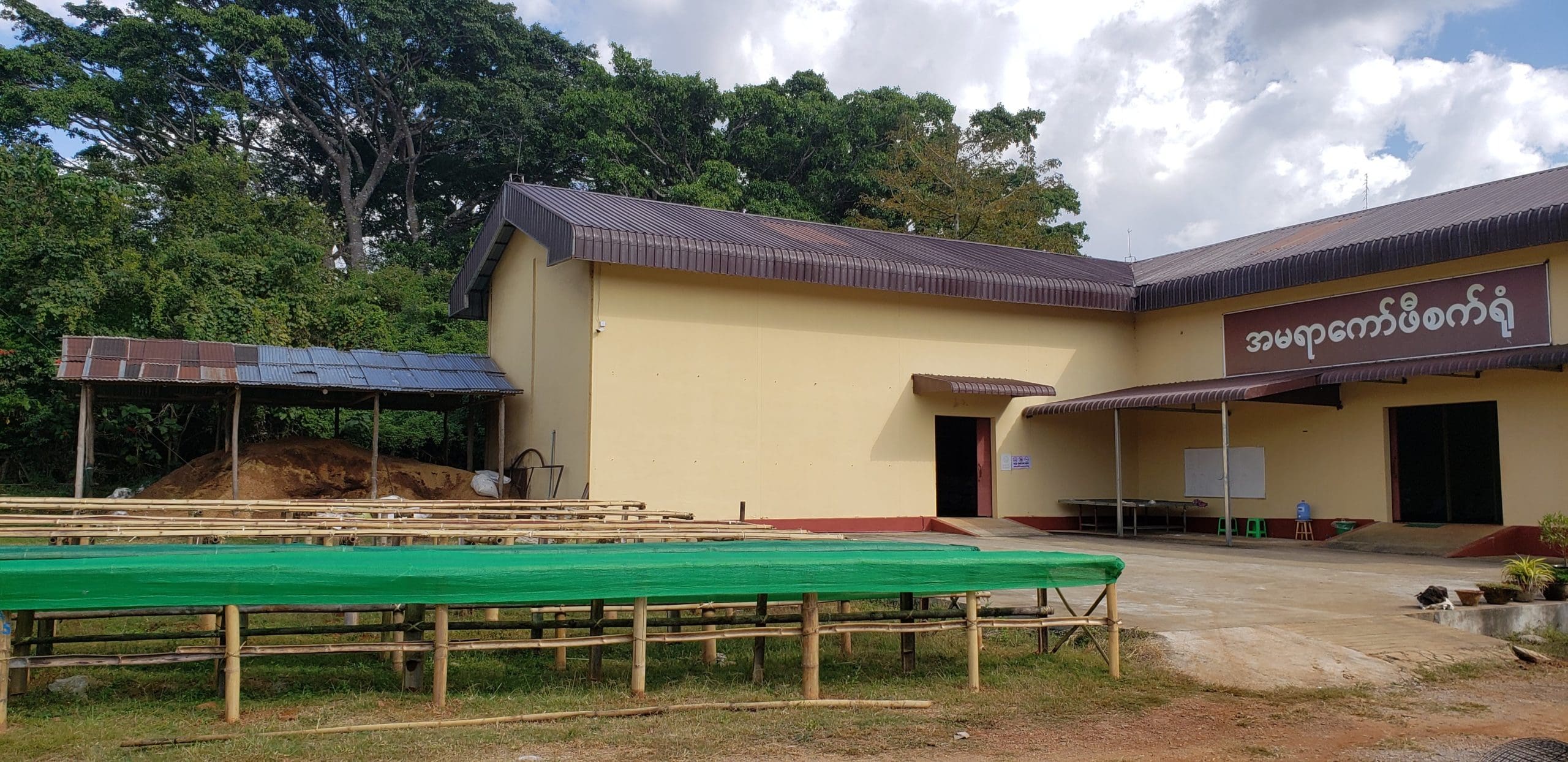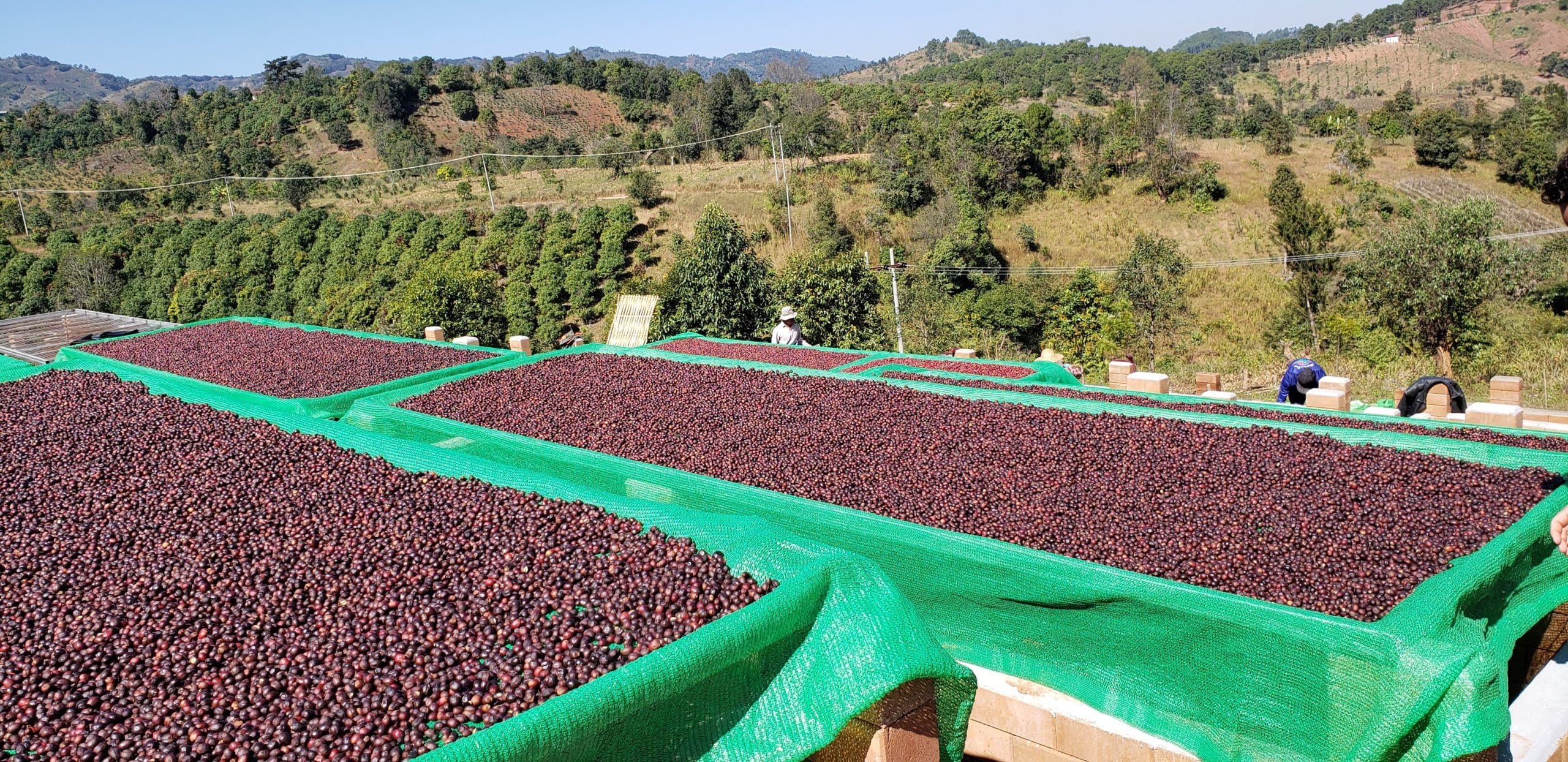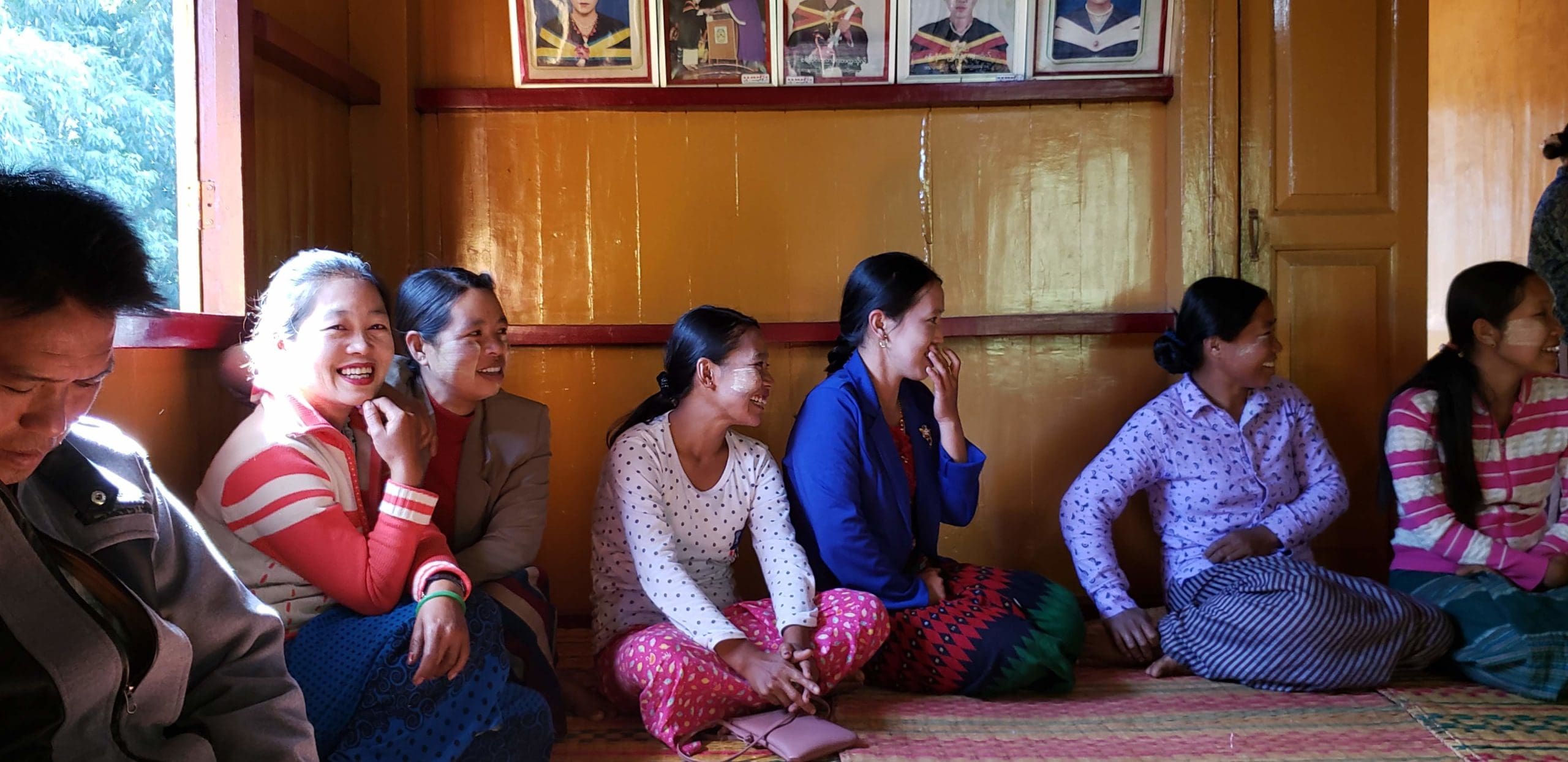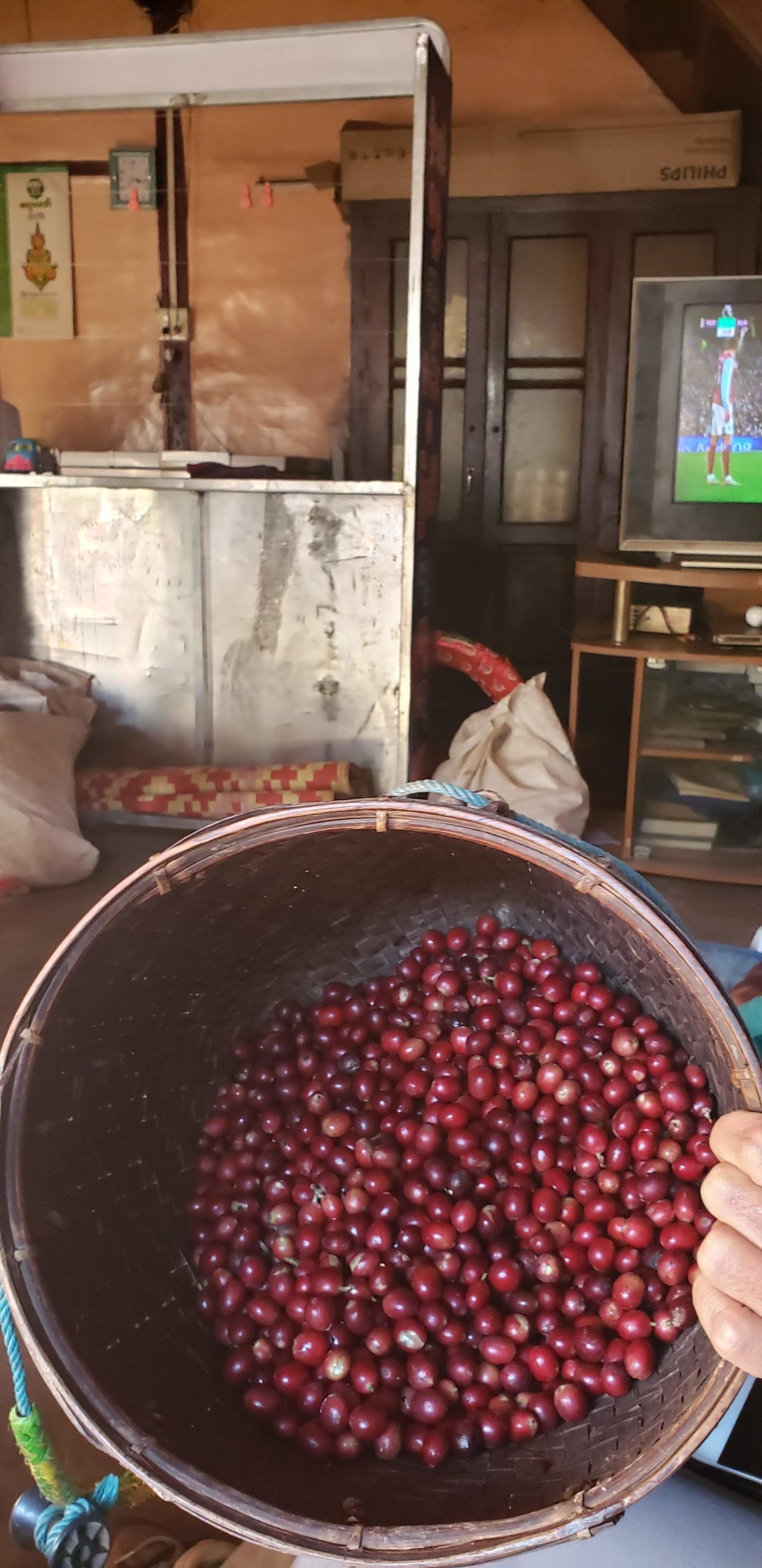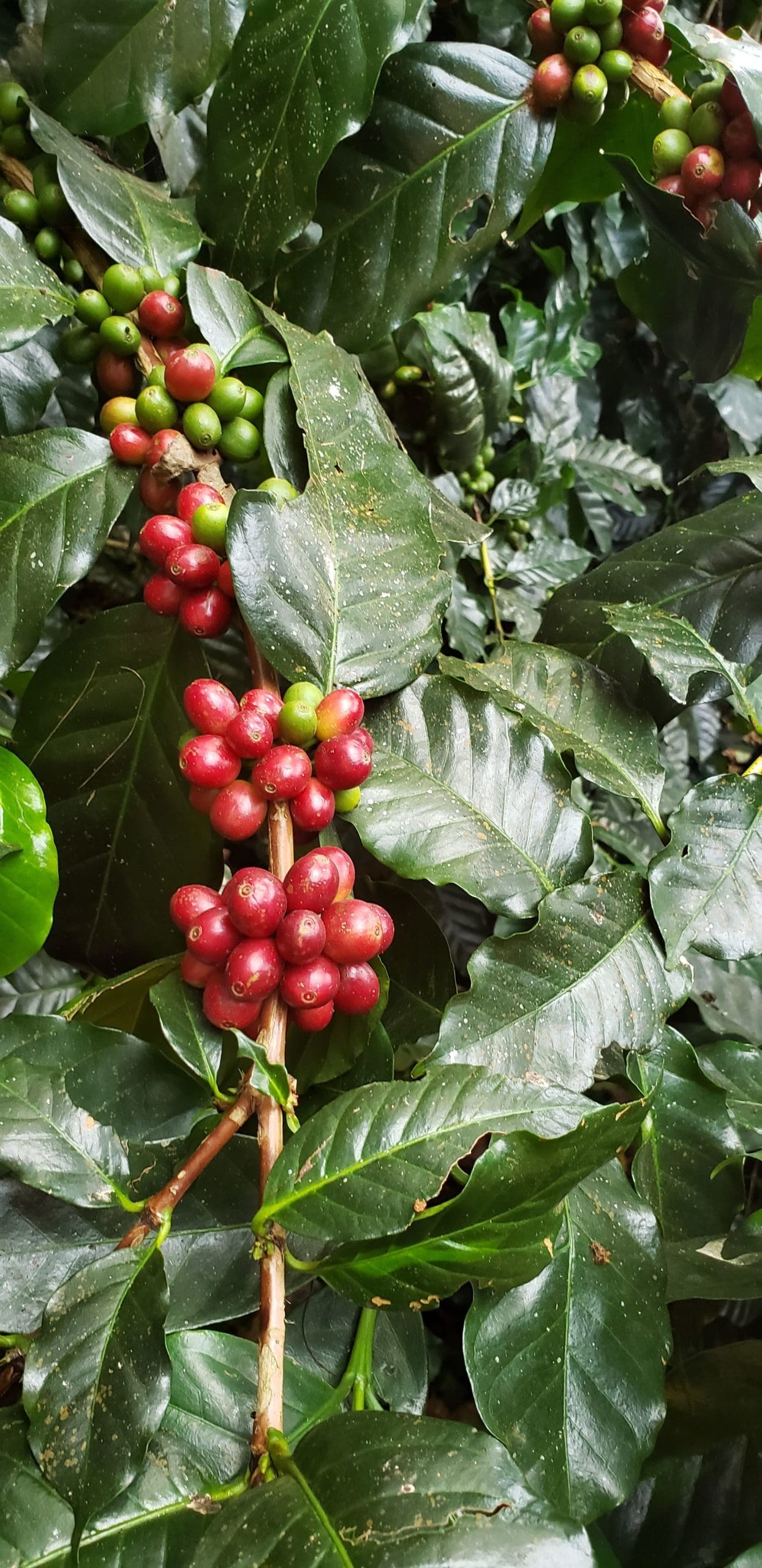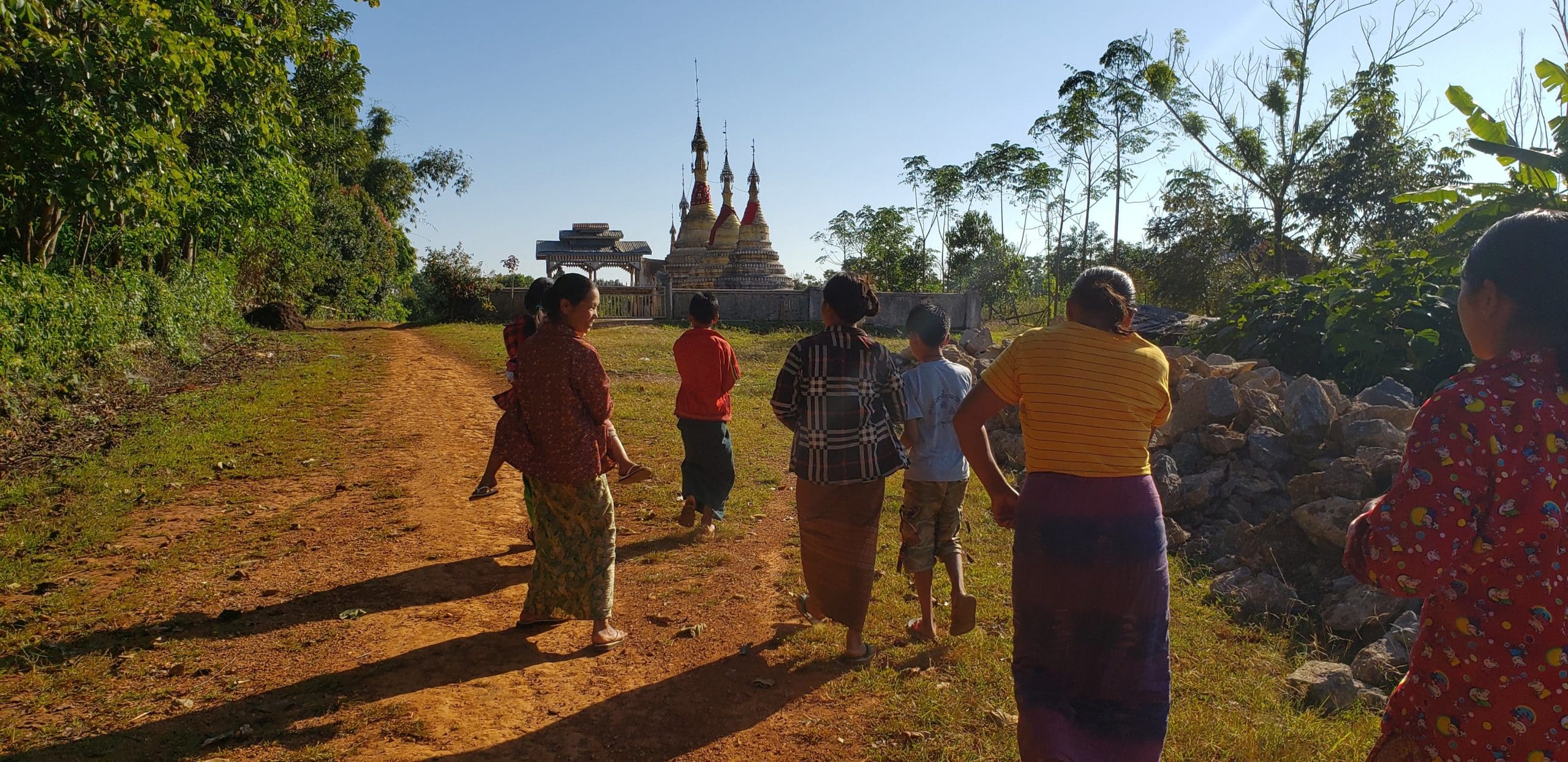We just returned from a visit to our partners in Myanmar! See our first Post 1 here and read on for Post 2.
We started off our visit in Ywangan with Su Su Aung, owner of Amayar wet and dry mill, and visited two of the communities she works with, Nwa Pan Kyi and Nyaung Agie. Su Su donates 10% of her profits to income-generating and development projects for the community. For example, the week before we arrived, Su Su and some of the producers had attended a flower-embroidery workshop. We then headed down the road from Amayar and met with Shwe Taung Thu (STT), the farmer-led organization uniting 19 communities doing specialty coffee production in the Ywangan area, before visiting five of the communities: Kyauk Kyi Pyin, Sin Net Chaung, Tet Kone, Mya Ze Di, and Hta Min Paung.
Next, we drove three hours south to visit Behind the Leaf dry mill in Pinlaung, and several of the villages (Hta Ngo, Wa Lee, Wa Ran, and Hti Ta Maung) that sell cherry to Behind the Leaf mill and exporter.
Back in Yangon, I met with U Sai Wan Maing (owner of Green Land Estate in Pyin Oo Lyin and member of MCG) and U Kyaw Hlaing (owner of Moe Htet Estate and general manager of MCG). I also met Javier Phua Jun Xin (of Gentleman Coffee Roasters and Easy Café in Yangon), a pioneer featuring specialty coffee from Myanmar in his shops, and April Su Yin Nwet, who was a Winrock consultant with the USAID project and who is now on the board of STT.
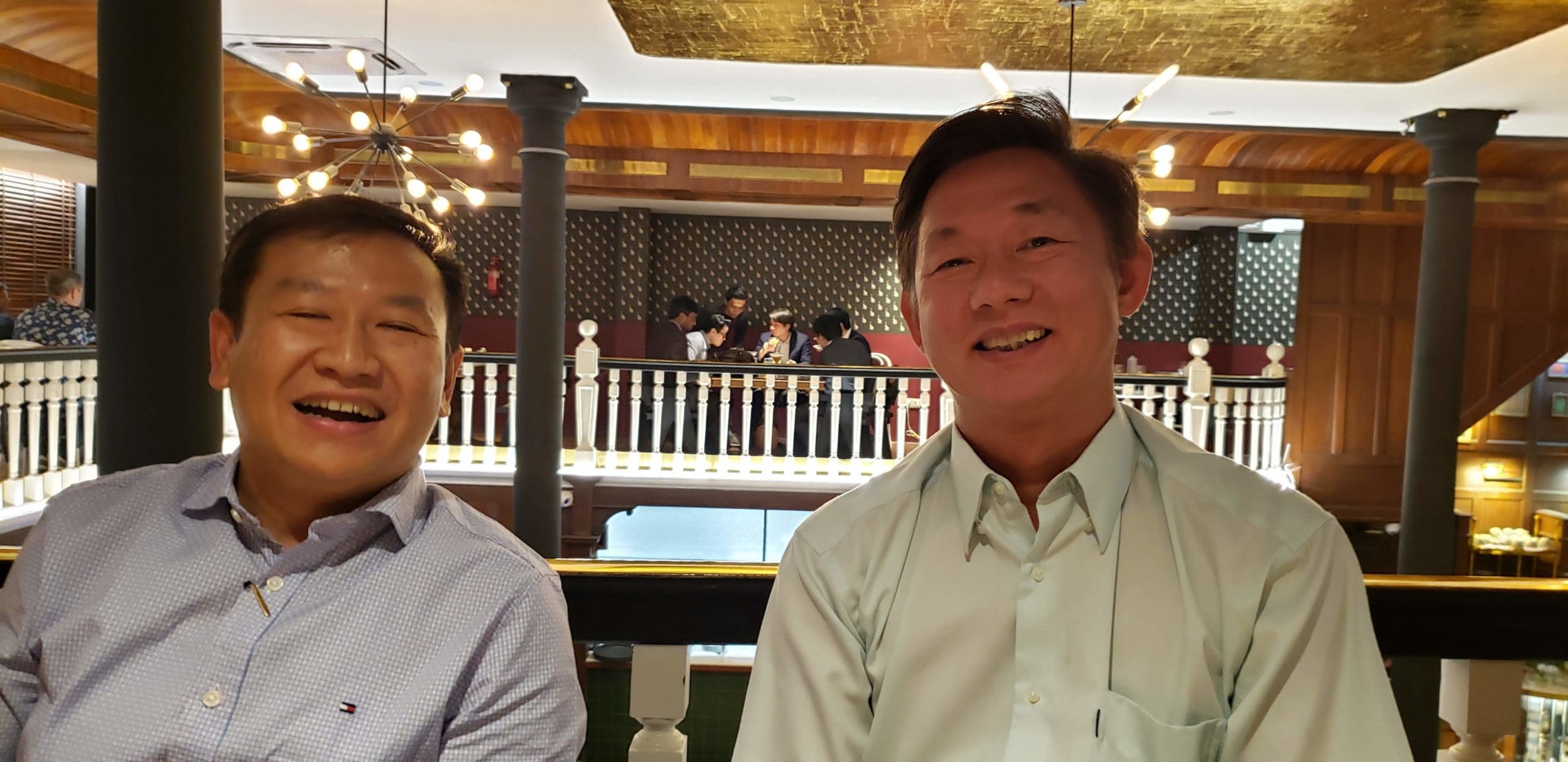
U Sai Wan Maing (owner of Green Land Estate in Pyin Oo Lyin and member of MCG) and U Kyaw Hlaing (owner of Moe Htet Estate and general manager of MCG) sharing the latest updates about Myanmar's specialty coffee industry.
Since we covered so much ground, I thought it might be useful to look at a cross-section of subjects affecting many of the groups we visited vs. a chronological play-by-play.
STRUCTURE
The Mandalay state is dominated by Estates (holdover from British colonial times) focused primarily on washed coffee and is also where the spotless MCG mill is located. MCG is a specialty-coffee mill that consists of 20 member Estates. MCG primarily sells MCG-branded coffee (coffee processed by cherry the mill purchases from smallholder producers) and also coffee available from the individual estates. Estimated production for 2019/2020 season is 180 MT of MCG coffee and 150-200 MT of member estate coffee.
STT Communities in Southern Shan State near Ywangan are almost exclusively producing natural-processed coffee. Each of the 19 communities has drying beds on location, and communities have associate members (farmers who sell cherry to core members at the village level), and also core members (members who contribute cherry and time managing the drying beds) who receive profit at the end of the year. Whereas commercial cherry is purchased for between 750-800 kyat/viss (1.63kg) equivalent to ~14 usc/lb, STT is purchasing coffee for between 1,000-1,200 kyat/viss or ~22 usc/lb. When you convert this to the equivalent green exportable, the numbers shake out to ~121 usc/lb, with at least one group offering a 100 kyat/viss bonus to associate members at the end of the season once all the coffee has sold. Estimated total production among the 19 communities for 2019/2020 is 68 MT.
Amayar (also referred to as “Amara”) is a wet and dry mill that purchases cherry from several nearby communities. Su Su has extensive drying beds at the dry-mill location and also has a small plot of her own coffee. Estimated total production for 2019/20 specialty coffee is 8 MT Dry Natural, 15 MT Black Honey, and 13 MT Fully Washed.
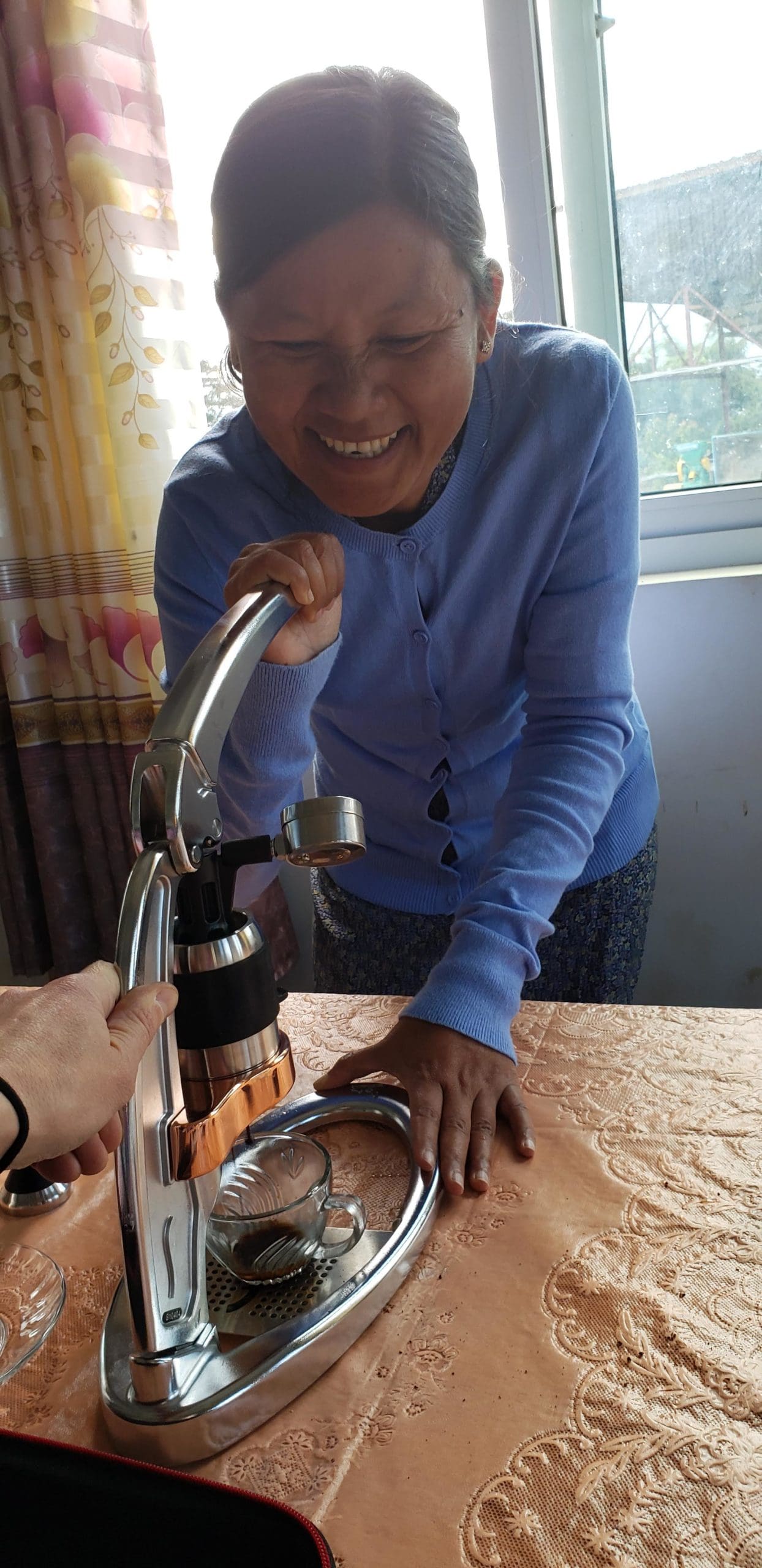
Su Su Aung, owner of Amayar and inspirational entrepreneur, making her first-ever Flair espresso with coffee from Amayar
Behind the Leaf is also a wet mill and dry mill near Pinlaung, 3 hours south of Ywangan. Behind the Leaf was started by Melanie Edwards, an intrepid American who moved to Myanmar in the early 2000s and hasn’t left since. Melanie started producing clay water filters and fell into coffee as an alternative income source for farmers living near Pinlaung just before the USAID project began. This year, Behind the Leaf is working with 24 villages and their coffees regularly score well in the national coffee competition.
CHALLENGES
Market access and weather took top billing for this year’s challenges. All groups we visited still had varying amounts of specialty coffee from last year still in storage (some already dry milled, and others in dried cherry) and are trying to find additional outlets as they prepare for the next season.
Earlier this year in Ywangan it hailed for the first time in 20 years, and unusual early-season heavy rains destroyed many of the cherries. Up north in Pyin Oo Lyin, Mandalay, yearly rainfall was the lowest in twenty years, affecting the flowering in April, and leading to lower yield estimates for this next harvest (Jan-Mar) due to smaller cherry sizes. It typically rains 60”/year, and this year it’s only rained 35” in Pyin Oo Lwin. The harvest is slightly delayed in Ywangan, but farther south in Pinlaung (where BTL is located) the season is a few weeks earlier, with early-season cherries on the drying beds.
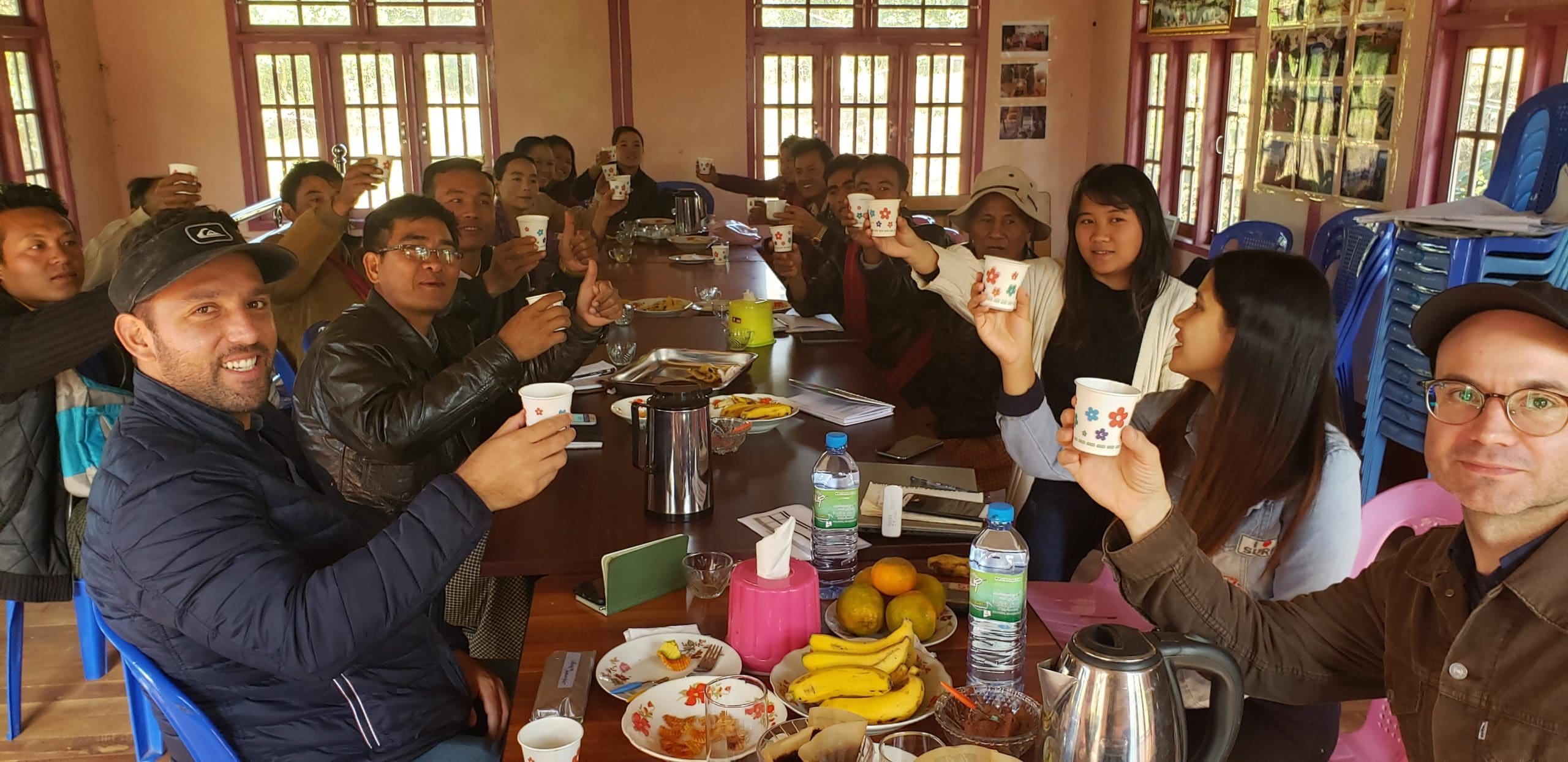
Meeting with Shwe Taung Thu, the leadership group representing 19 villages in the Ywangan area doing specialty coffee production.
YIELDS
Another challenge has been low yields, especially among smallholder farmers due to inconsistent spacing, pruning, and natural fertilizer. While there is an agricultural government coffee research center in Pyin Oo Lwin, it has not yet provided to be useful for the specialty coffee sector. In the late 90’s the Burmese government gave estate owners three different coffee spacing options to choose from: 1 x 2 meter, 1.2 x 2 meters, or 1.2 x 2.4 meters. Using various spacing (ranging from 1,300 – 2,200 trees/acre) and various cultivars, both U Sai Wan and U Kyaw Hlaing found that their overall yield was the same regardless of varietal and spacing. Both plant coffee trees at around 1,300-1,400 trees/acre so that the soil is less depleted, and silver oak for shade at around 4 x 4 meters.
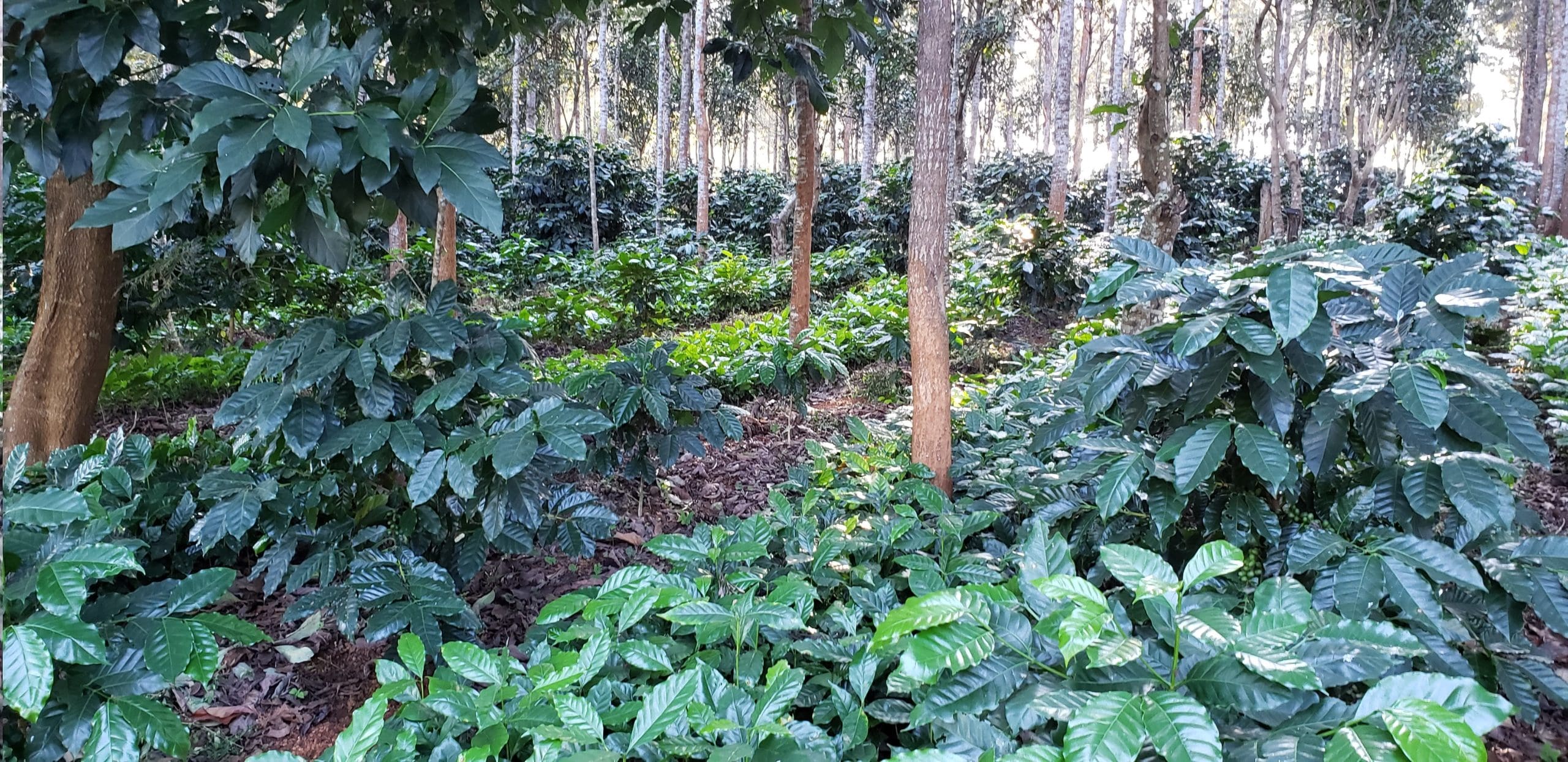
Photo of a farm in NyaungAgei village in Ywangan. Many producers have struggled with low yields, but some smallholders have model farms with good shade trees, nurseries, and organic fertilizer.
CULTIVARS
The main varietal in Ywangan is Catuai (which producers in the area call the “Myin Dwin” varietal since Myin Dwin village was the first in the area to move from poppy production to specialty coffee), with coffee estates using several varietals; SL795, Catuai, Caturra, and Gesha, among others. Mya Ze Di village planted 3,000 Gesha trees earlier this year, and Behind the Leaf is starting a seed exchange among farmers this year.
Almost all producers in Ywangan and Pinlaung intercrop coffee with tea and avocadoes, while some also grow oranges, peppers, limes, and cabbages. Banana, jackfruit, and avocado trees are common shade-fruit trees among smallholders, with estates and some producers using silver oak for shade.
CERTIFICATIONS
While there is very little certified organic coffee in Myanmar, all the coffee producers we visited In Ywangan and Pinlaung were passively organic, with some using organic fertilizer using cow manure. Other communities have not used any fertilizer and hope to start using organic fertilizer in the coming years to enrich the soil biodiversity and improve yields.
MARKET ACCESS AND OUTLOOK
Pricing for all of the lots has varied over the years as groups streamline their processes, learn their costs of production, and work to find a sustainable price-discovery model with buyers as the market fluctuates and nearby countries (such as China) increase their specialty coffee production. For roasters able to use screen 14+, one option may be combining higher-scoring specialty lots with lower-scoring specialty (low 80s) washed lots for roasters to use in blenders.
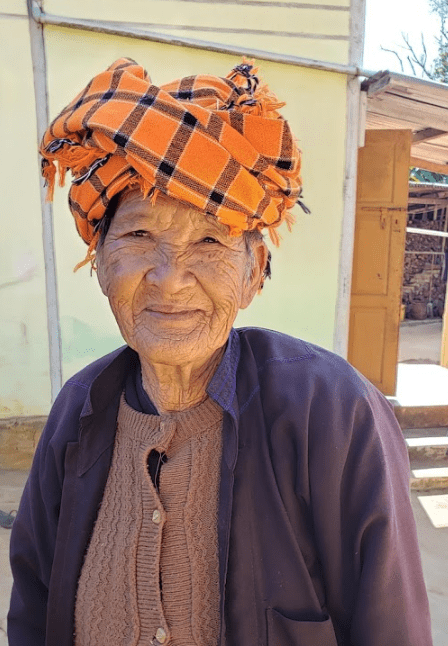
Daw Jet, producer in Wa Lee village near Pinlaung (she and her family own the most trees in the village!)
THE WAY FORWARD
As more buyers taste both washed and natural-processed coffee from Myanmar, I imagine and hope that demand will increase from this beautiful and unique specialty coffee origin. The cherry selection is meticulous, the cupping profiles are delicious (tropical fruit and strawberry, but balanced and clean), and perhaps most encouraging, is that youth and families are involved in and excited about producing specialty coffee. Even though tea is a much more common beverage in Myanmar, many groups have tasted their own coffee, and coffee shops in Yangon (such as Easy Café) are starting to serve coffee from Myanmar instead of exclusively importing coffee from other regions. The specialty coffee scene in Myanmar is small and tight-knit, and even with friendly competition among different sellers, the entire industry is trying to find ways to forge ahead together into this next chapter for specialty coffee. We expect new crop lots to land in early September, and can’t wait to see what this next year’s harvest brings at the specialty coffee sector grows a year older.
